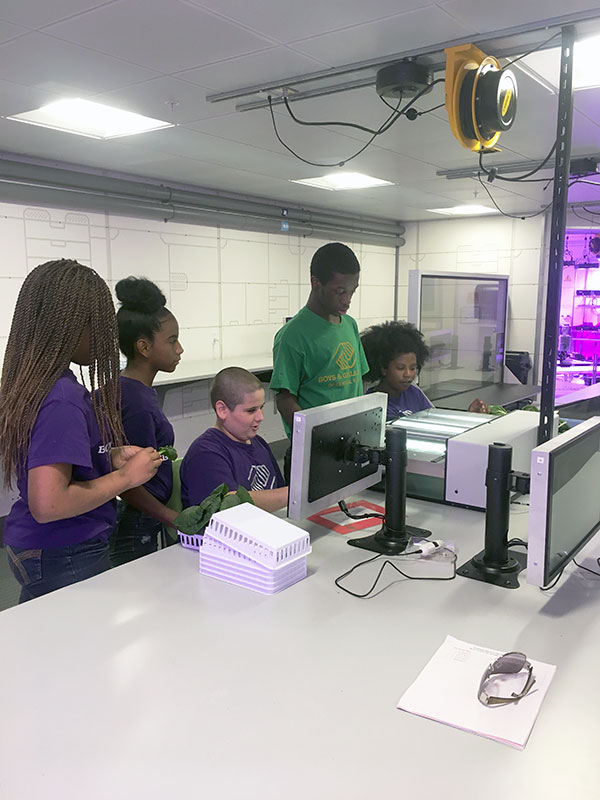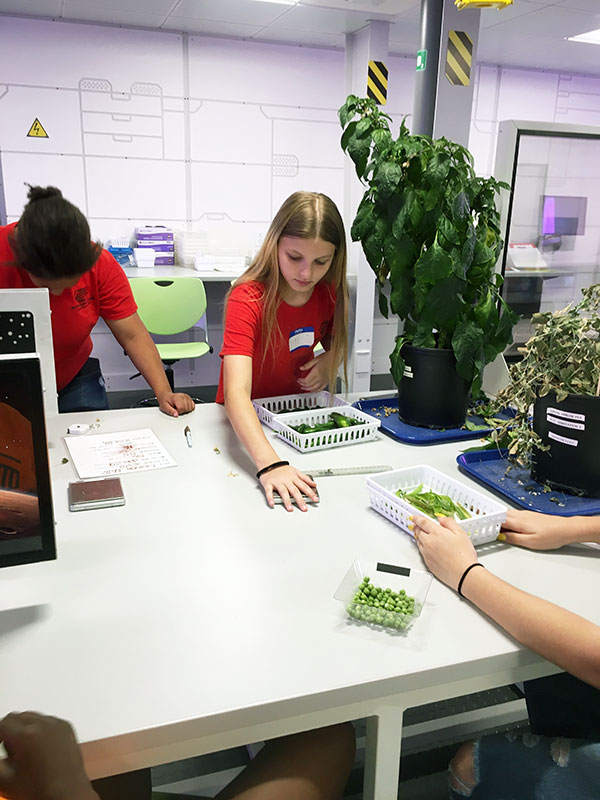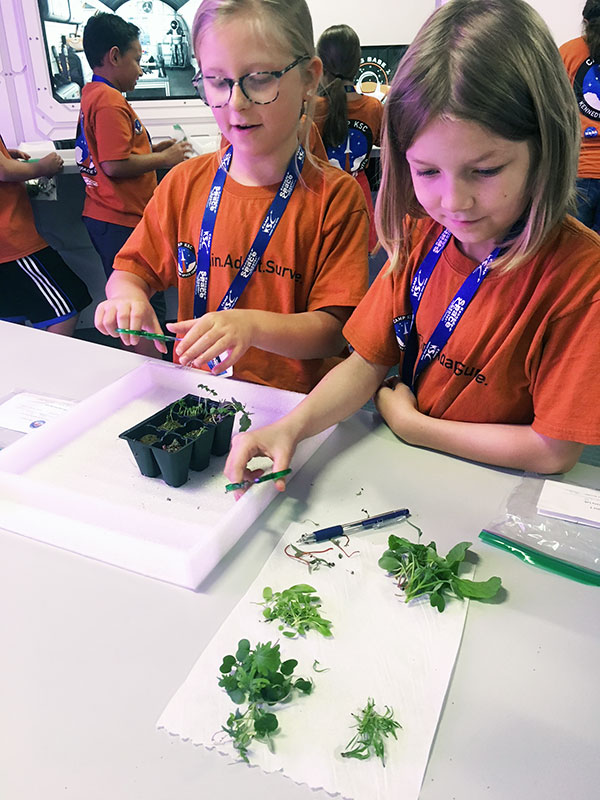Transporting Boys and Girls to Mars
Published: September 5 2018 Updated: March 11 2025

Mars Base 1 is a futuristic “pre-creation” of a working base. It features three different lab areas, a galley and a docking hub for the Mars Transfer Vehicle (MTV) that brings our trainees to the Red Planet and then returns them to Earth at the end of their duty shift. This summer, we transported more than 1,000 guests to Mars in our Pegasus-class crew module aboard the Mars Transfer Vehicle, Concordia.
Three of these missions on Mars Base 1 were carried out by members of the Boys and Girls Club of Central Florida. Club members from the Mims, Temple Terrace, and Cocoa clubs traveled to Mars Base 1 to complete an internship in the Life Science Botany Lab. There, they harvested a variety of fruits and vegetables, collecting data to send to NASA scientists who are working on food production experiments such as Veggie and the Advanced Plant Habitat. Some of the plants our budding botanists (pun intended) worked with included NuMex chili peppers, green arrow peas, pak choi, and southern giant curled mustard.


Summer campers also participated in experiments in the Botany Lab, including the planting and harvesting of assorted microgreens. These hands-on experiences taught our astronaut trainees the basic principles of indoor gardening and gave them a taste (another pun) for the science of botany, which affects all of our lives every day.

Follow the plants’ progress in the Botany Lab through the official Mars Base 1 Botany Lab Facebook. There you can check on the growth of our vegetables, including the seeds your students planted! Remember, data collected during Mars Base 1 is sent to real NASA scientists to assist their research.
After a trip to Mars Base 1, your students will leave Mars with a better understanding of how to adapt to life away from Earth. It is an experience unlike any other on the planet!